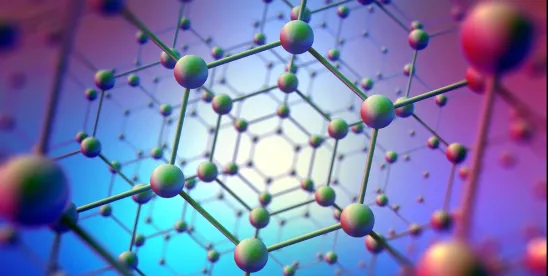Microplastics are, in recent years, at the forefront of regulatory and policy driven conversations across the United States. Regulatory measures to address microplastics at both state and federal levels have been introduced with increasing frequency. This trend holds true in 2025, which has already seen a significant quantity of legislative, regulatory, and policy proposals and actions in the microplastics sphere. Ongoing interest in microplastics and regulations suggests continued increases in regulatory activity moving forward — although the ways in which the regulations will manifest remain to be seen. We provide an overview of microplastics regulatory and policy developments from 2025 to date, both at federal and state levels.
Federal Actions
Introduction of Microplastics Safety Act
A bipartisan bill (H.R. 4486) “[t]o direct the Secretary of Health and Human Services, acting through the Commissioner of Food and Drugs, to conduct a study, and submit to Congress a report, on the human health impacts of exposure to microplastics in food and water” was introduced on July 17, 2025. The bill seeks a study into pathways of microplastics exposures and whether these exposures impact human health, with a focus on the following areas: children’s health, the endocrine system, cancer, chronic illness, and reproductive health. The Secretary of Health and Human Services (HHS), through the U.S. Food and Drug Administration (FDA) Commissioner, would conduct this study and issue a report to Congress on the findings and conclusions. The bill requires that the report contain suggestions and recommendations to address impacts from microplastics exposures. The bill has been referred to the House Committee on Energy and Commerce.
Introduction of Plastic Health Research Act
On August 5, 2025, Representative Haley Stevens (D-MI) introduced a bill (H.R. 4903) “[t]o amend the Public Health Service Act to carry out, expand, and coordinate programs relating to plastic exposure health research, to authorize grants, contracts, and agreements with respect to such research, and for other purposes.” The bill proposes to “carry out, expand, and coordinate programs” to study the impacts of microplastics exposures, and to fund those projects and programs. The bill asks for $10 million per fiscal year from 2026 until 2030 to implement these directives. Additionally, the bill seeks to create research centers dedicated to studying the impacts of microplastics. The American Chemistry Council has voiced support of the bill, noting that filling in informational gaps will help lawmakers and policy experts make sound and reasonable, fact-based decisions moving forward,
Other Policy Actions
In addition to the introduction of microplastics bills, the Make Our Children Healthy Again Report, released May 22, 2025, identifies microplastics as a contaminant that should be further studied to better understand the impacts of cumulative exposures. Microplastics are also discussed in a Congressional Reportpublished March 7, 2025. The report overviews both global and U.S.-specific plastic production, use, and disposal statistics, and discusses microplastics as a source of freshwater and ocean contamination. The National Oceanic and Atmospheric Administration (NOAA), as well, has ongoing research and studies into microplastics and associated impacts as related to oceans and marine life.
State Actions
Legislation related to microplastics introduced in 2025 at the state level has run the gamut from bans on single use plastics, to bans on specific products, to study bills aimed at informing future legislation. Many jurisdictions are not targeting microplastics by name, but instead are taking action to ban or limit products that break down into microplastics. Sponsor statements behind these bills discuss microplastics as a target of the proposed legislation. Notable state actions in the microplastics regulatory space include:
- Oregon passed a bill relating to plastic waste (S.B. 551), an expansion of the state’s 2019 plastics bags ban. Effective in 2027, this law will limit establishments from providing single use plastic bags to consumers.
- Several bills passed in previous legislative sessions have 2025 start dates or deadlines. Illinois’ Small Single-Use Plastic Bottle Act (S.B. 2960), passed in 2024, had an active date of July 1, 2025. This law prohibits hotels of certain sizes from providing customers with small bottles of “personal care products” (like shampoo and lotion).
- Many bills introduced this year have already stalled or died in committee. Minnesota’s S.F. 1389 would have sought a study on the presence of microplastics in meat and poultry, and is the only state bill introduced this session that approached microplastics from an agricultural perspective. Rhode Island’s S.B. 406 and H.B. 5492 both pushed for the creation of a state Microplastics Reduction Act, which would prohibit the sale or distribution of products containing synthetic polymer microparticles, among other administrative actions. Other unsuccessful bills sought to limit plastics products such as glitter and artificial turf because of concerns that these materials will degrade and create microplastic pollution.
- California has proposed a rule that would add microplastics to the state’s Candidate Chemicals List (CCL). Inclusion on the CCL does not itself create any regulatory obligations but opens the door for tracking whether the contaminant is present in consumer products, in which case it can be designated a chemical of concern through rulemaking. The public comment period for the rule ended on August 4, 2025.
Commentary
Potential for Federal Framework
Although the definition of microplastic is more or less consistent across jurisdictions, state approaches historically and in 2025 vary in approach, scope, and purpose. As states continue to pursue and implement this range of regulation, the national framework for microplastics will become more and more complex. Industry groups, manufacturers, and others in the regulated community may benefit from federal regulatory schemes that may bridge the gap between state-to-state jurisdictional differences. As the federal legislature begins to introduce and pursue microplastics research initiatives, the interest in federal action on the topic may increase, as well.
Research Bills/Studies Implications
At all levels, scientists and lawmakers agree that more information is needed about microplastics, their modality, and their impacts. With limited health impact studies and gaps of information, existing microplastics data are often insufficient to make scientifically sound and fact-based regulatory decisions. Acknowledgement of the need for additional microplastics studies and data is largely bipartisan and multiple agencies under the current Administration have noted microplastics as an area of regulatory interest.
Ongoing U.S. Environmental Protection Agency (EPA), NOAA, and other efforts will likely result in additional data and study bills proposed or passed this session will add to the effort to gain a more comprehensive and reliable pool of information about microplastics’ health and environmental impacts. As this information is gathered and a deeper understanding of microplastics is formed, the public perception and political landscape surrounding microplastics are likely to adjust to accommodate the growing understanding of the plastics. Without the data, it is difficult to say what direction the regulatory world will swing, but interest in microplastics from a regulatory and public health perspective will certainly remain.





 />i
/>i

